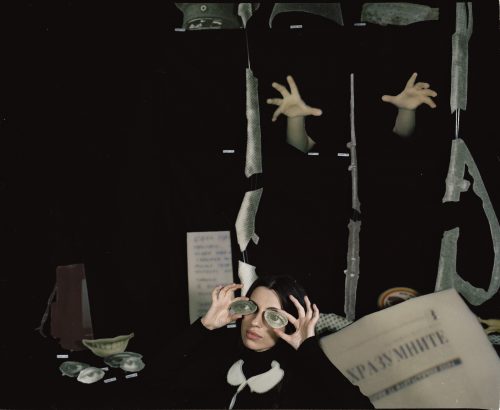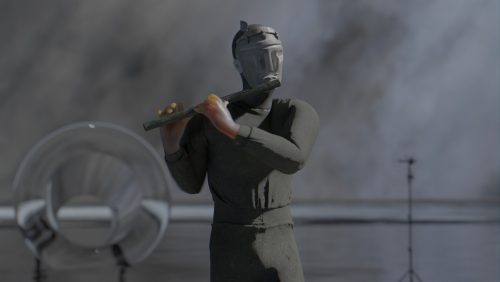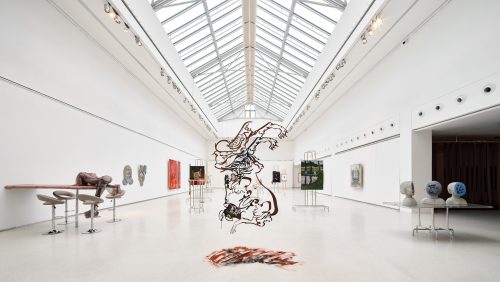
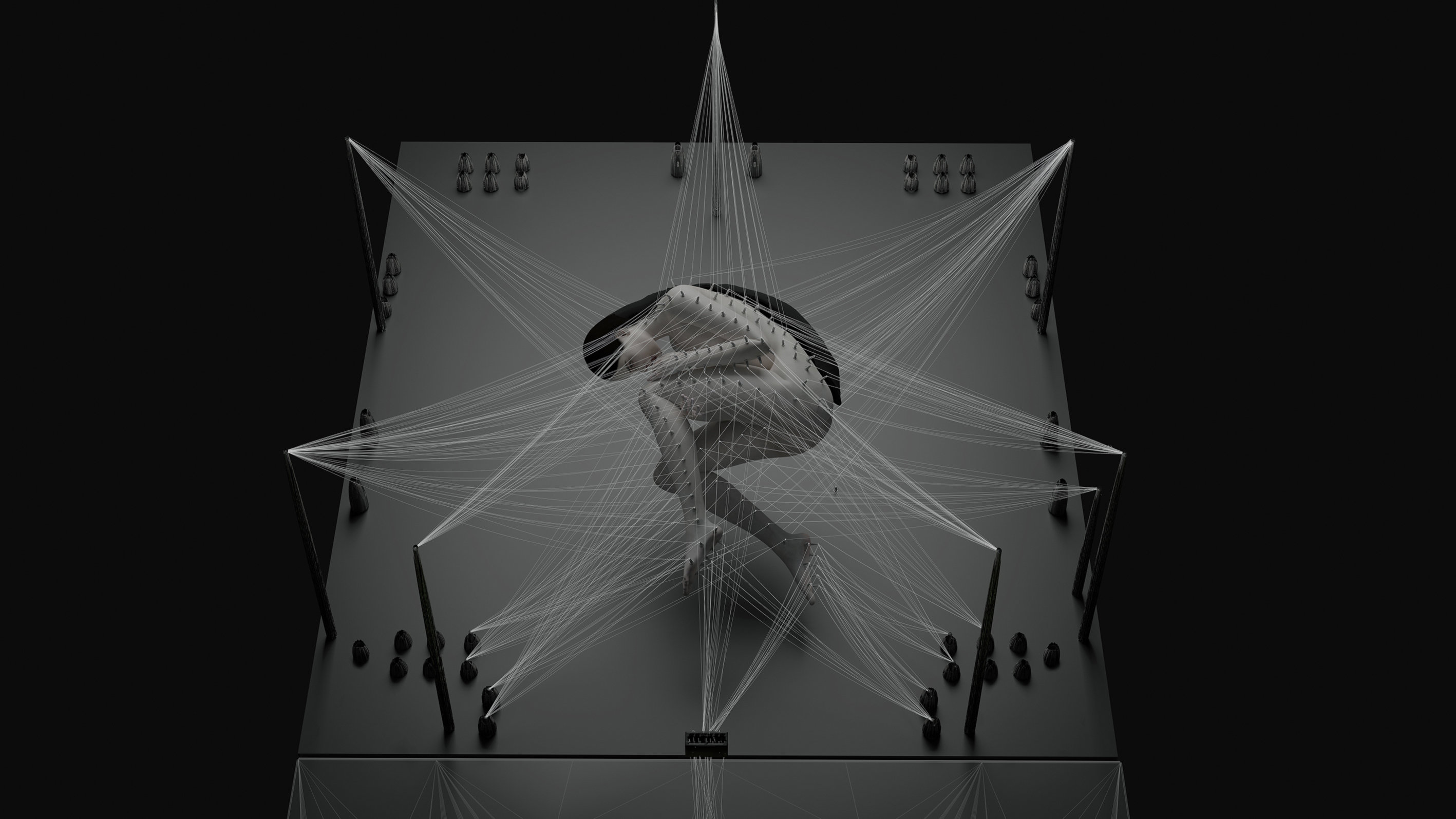
KUBAPARIS MUSE #2 Evelyn Bencicova
Project Info
- 🖤 Natalia Evelyn Bencicova
- 💚 Ariana Krieger& Saskia Höfler-Hohengarten
- 💙 Samson G Balfour Smith; Enes Güç; Galerie Barbara Thumm; Philipp Bollmann; VR ART PRIZE Journal ; Slovak National Gallery; Sensorium Festival; Adam Csoka Keller; Studio Labour; Zeynepe Schilling; Berlin Atonal; Ikonospace
- 💜 Ariana Krieger
Share on
Embarking on a captivating exploration of artistic expressions, KUBAPARIS MUSE #2 introduces us to Natalia Evelyn Bencicova, a visual artist who weaves stories across diverse mediums. Evelyn shares insights into her creative process, painting a vivid picture. Her journey unfolds as a quest for understanding, capturing, and conveying ideas, serving as a mirror, reflecting both personal and universal experiences, and inviting viewers to engage in introspection and interpretation. Evelyn’s dedication to research and critical reflection underscores the transformative power of art, offering insights into the alchemical process of converting thoughts and emotions into tangible creations. In essence, this interview serves as a portal into Evelyn’s artistic realm – where curiosity, collaboration, and contemplation seamlessly intermingle, birthing a rich tapestry of narratives that traverse the boundaries of mediums and languages.
A: How do you approach the creation of your art?
E: I create a world-space, a stage where the story unfolds. It can take many shapes or move from physical to digital and another way around, connecting such realms, different mediums, and narrative techniques – however the idea demands, I try to follow and support its growth.
At the basis lays curious observation of all that is around or within. I'm receptive to outside impulses leading to inner reflections, keeping my eyes and mind open to the moment, when looking becomes seeing. The process of creating is a thought searching for its form – the way to understand, grasp, capture, and communicate, mostly but not exclusively in this order.
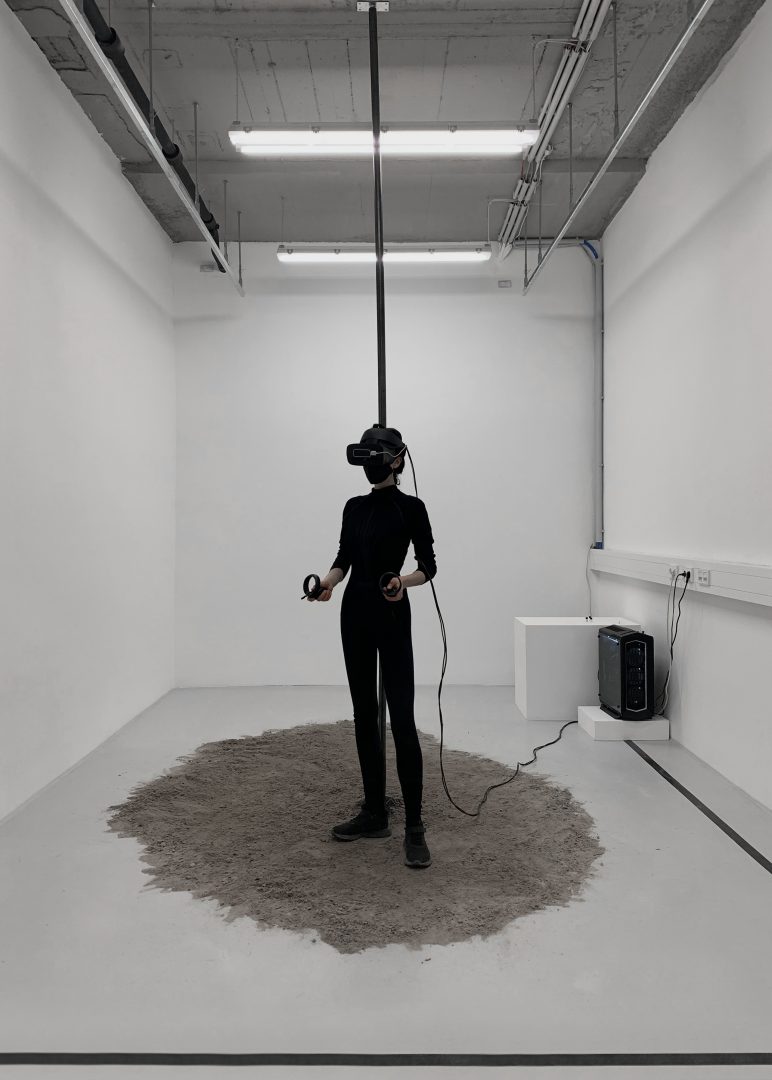
A: What role does language play in your art?
E: I am generally interested in the role of visual as language, a tool of expression even though it is wordless. When I got asked how my creative path started I came to realize that it had begun long before I picked up the camera or made a picture. As far as I can remember I was inventing stories, and observing all events with narrative imagination. Growing up in a highrise building block in Slovakia with our only view being other windows, hundreds or thousands of them, one of my usual activities was watching neighbors with binoculars. Through these rectangular frames, so similar to a viewfinder or screen, I observed details of their homes and behaviors. But I always imagined more than was visible, I saw their entire flat, as well as their life, all in my mind built from fragments that I could grasp. I would say this is where my artistic language started to form – with its stage-like quality and attention to detail as a carrier of meaning. It naturally developed further with time, but some aspects stay until this day – as I always create fiction based on truth.
More specifically speaking, I likewise work directly with language - writing text and voiceovers for all projects which include it, often even coming before visuals as initial inspiration. I especially enjoy playing with words that extend the meaning further, with hidden hints of etymological references. Even the titles of projects like e.g. Asymptote, Artificial Tears, SimulacRaum, Anti-Atlantis, or Æther should serve as impulses for thought adding to the planes of visual, their entry points, like a personal note, riddle, or a prologue.
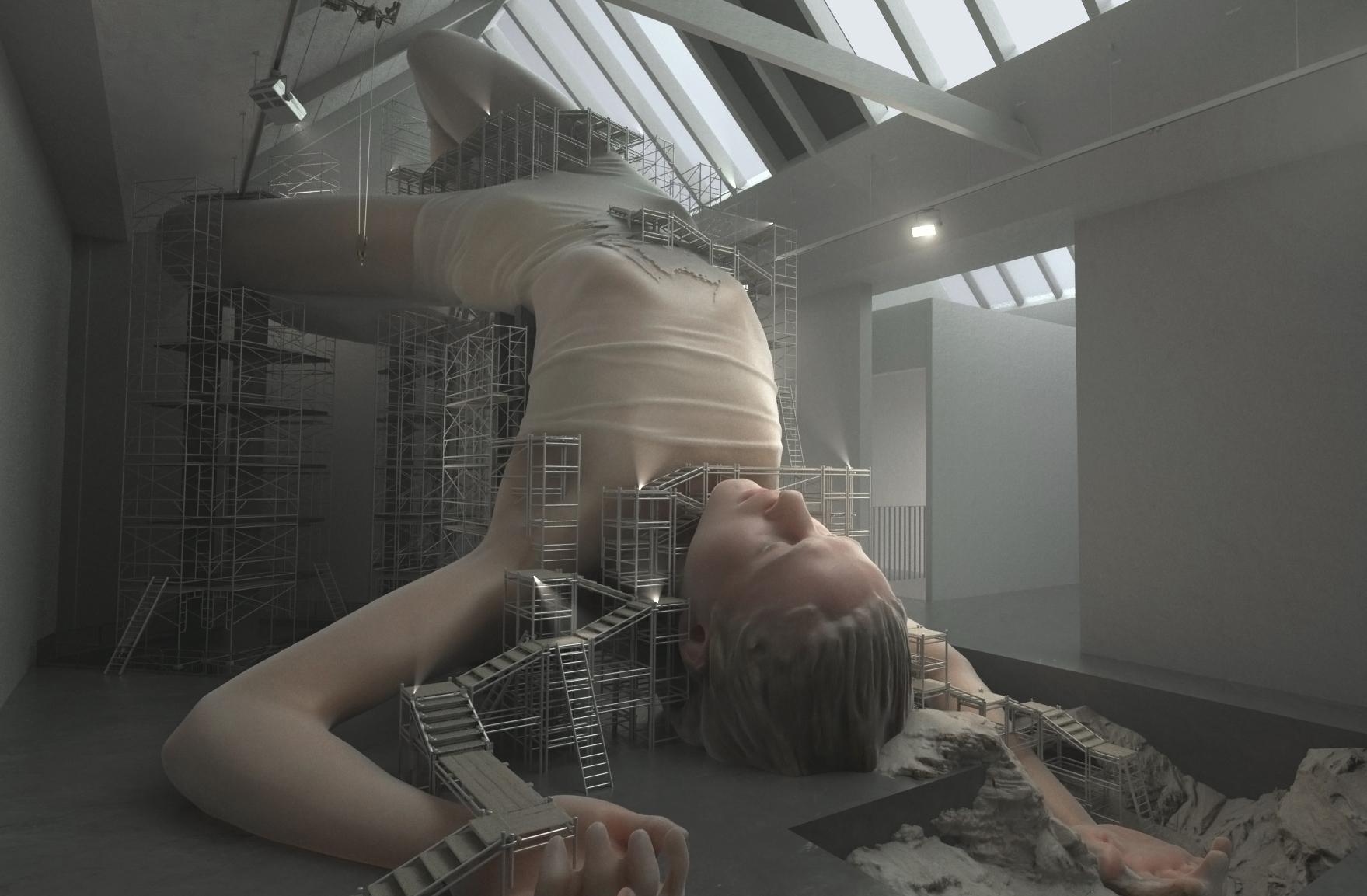

A: Speaking of Æther, the project your're currently working on, would you share with us some insides of this piece?
E: Æther, a collaboration with Samson G Balfour Smith- @Screen Noise, is an ongoing project that started almost two years ago as a series of experiments growing exponentially in the process – involving movement, sound, spoken word, and visual story-telling, with an aim for live performances in the future.
Collaboration unfolds in constant exchange, working simultaneously on different parts that inspire each other and merge in often unexpected ways. Samson focuses mainly on sound, 3Dworks, and code, as well as connecting it all. I work on translating thoughts into words and movements. Each of these parts influences the narrative at play in Æther, almost as using different languages that remain in the conversation. The protagonist of the piece, avatar EVE, is yet again a creative union in which we connect forces into form. My body immortalized as a digital double is set in motion virtually, taking the reference from movements we originally captured. The same approach is used with voice and sound which Samson transformed into landscapes and architectures serving as backdrops for the story.
Æther embodies a journey, a personal one but also bigger, eternal, and not mine only. It deals with the prison of power through guilt, a break from fear and control, and the fall into knowledge, freeing oneself. What I am writing is at the same time intimate and universal, and even though the broad history referenced could not be experienced by one body physically, I feel like I lived it, almost as if we all, still do. That is the main theme of Æther.

A: How do you manage the intricate balance between the personal aspects that drive your creative process and the universal themes that your art aims to address?
E: I receive an impulse – vision, sentence, or movement and I'm not even asking if they come from me or somewhere else – the past, present, or future. It is experienced as an absolute urge to embody it, to deal with them. This can be interesting for your theme of the Muse, or of the medium. Not everyone works like this but I strive for outside becoming inside and vice versa. There might be no division, no wall, and no door – only the flow:)
Generally speaking, each of my projects works in layers. There is a personal aspect in why a certain topic resonates with me, and why there is a need to dive deeper. Yet, there is something bigger, as the issues I touch upon are often experienced by many others. Ideally, it works like a mirror – reflecting me but equally to anyone else who looks in it.
Such a look though does not stay on the surface. Visual is only an outside layer – which remains important as it captures attention that allows further contemplation. The decision to take the way inside, into the meaning, or one's own interpretation is on the viewer, the audience. I do not make a command or dictate answers, it is rather an invitation or a question that I desire to place inside one's mind with work created.
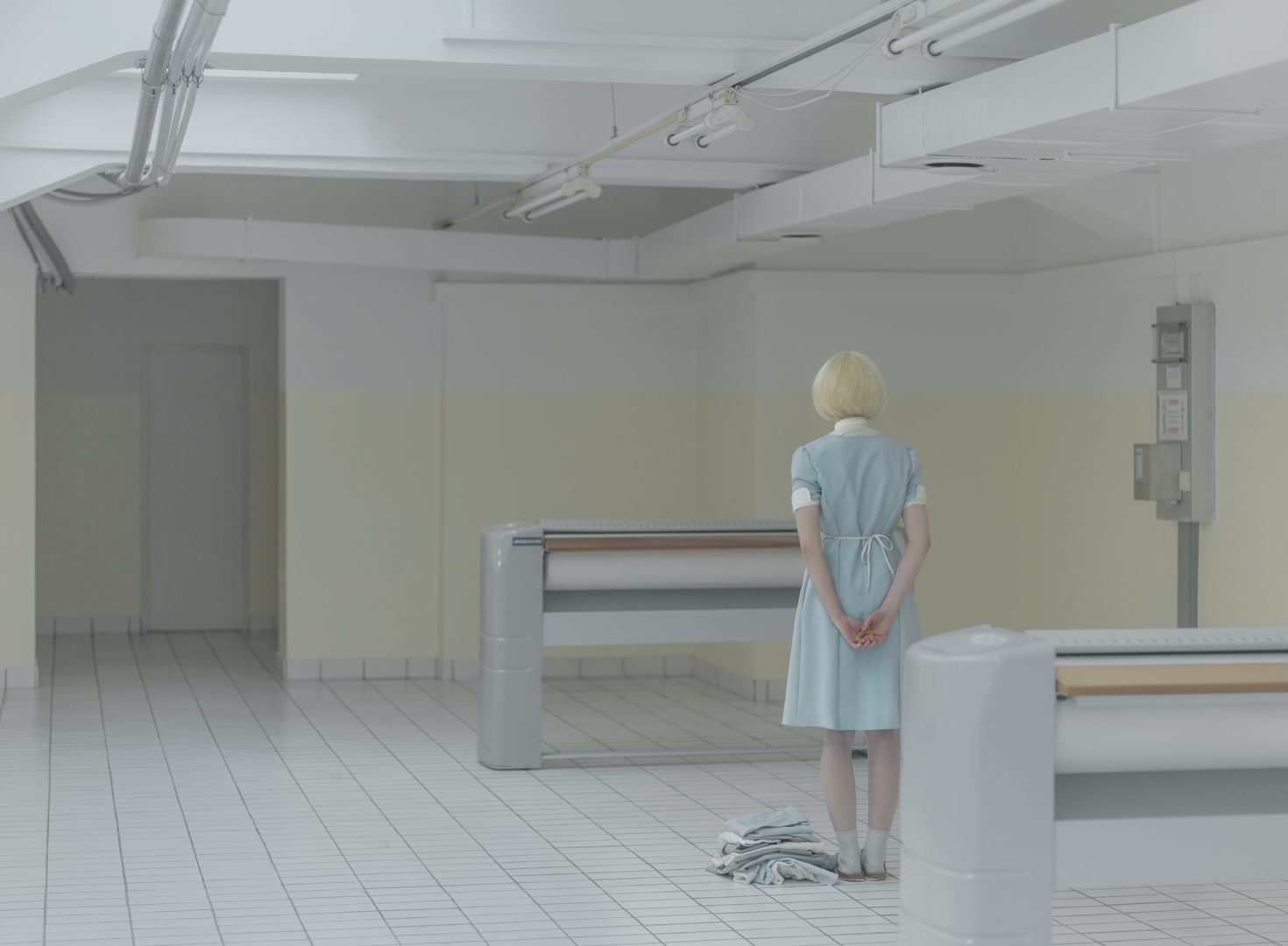
A: How did your artistic journey, guided by various influences and reflections on femininity, gender, and technology, lead to the evolution of your piece Artificial Tears?
E: I grow with the exploration of topics, inspired by those who touched them before me. By engaging with a theme by several people in different times, places, and positions the net is knitted together and expands. The topic of ‘femininity’ has been one that has undergone the biggest development in my work so far. I explored it through the lens of body perfection, disability, aging, and religious or medical dogmas, arriving at the standpoint of technological development in the work Artificial Tears.
When the project started with the question ‘What is the difference between a human and a machine?’ I did not even give a second thought to making the character intentionally anonymous but obviously female (referencing the YouTube phenomenon of Tara the Android). Many of ‘her’ actions were stereotypical – taking selfies or washing clothes – which felt quite intrinsic as the character was part of my own identification as alien and pretending, in opposition to belonging in society and the role it prescribed to me. When I returned to the project two years later to work on the VR experience and noticed how much my viewpoint has changed, it shocked me. Why did I make the possible machine female? Who created Tara the Android? What the pictured passivity actually represents and why this seemed so natural to me initially? I knew that if I shall continue on this project it must be through the lens of critical reflection.
Cyborg Manifesto by Donna Haraway was part of that, aside from other sources like the writing of Alan Touring or Judith Buttler to mention a few. Research extended to lectures on AI voice assistants like Siri or Alexa who, even though never assigned gender, represent with their behavior some historically, yet wrongly, ascribed aspects of ‘femininity’ tied to submission, obedience, and servitude. The aim of VR artwork AT became giving ‘her/it’ a voice and power to act, transforming during the process, from object to subject while the human/machine dichotomy became secondary – seen as a connection rather than competition.
The tool's use is determined by those who have it in power and those are the ones that must be addressed if using it wrongly. As Donna Haraway writes in Cyborg Manifesto there is a responsibility and pleasure in confusion and construction of boundaries.
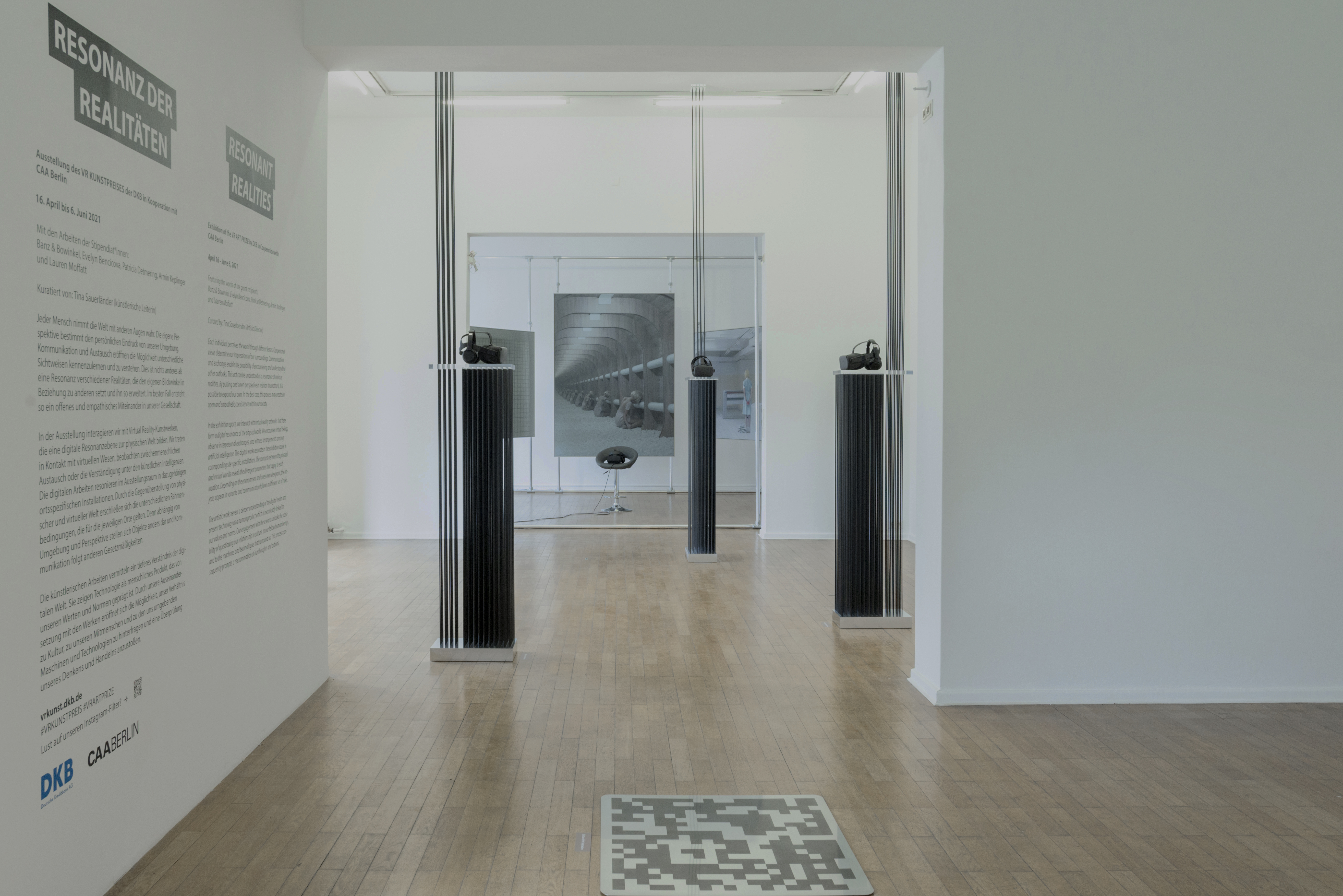
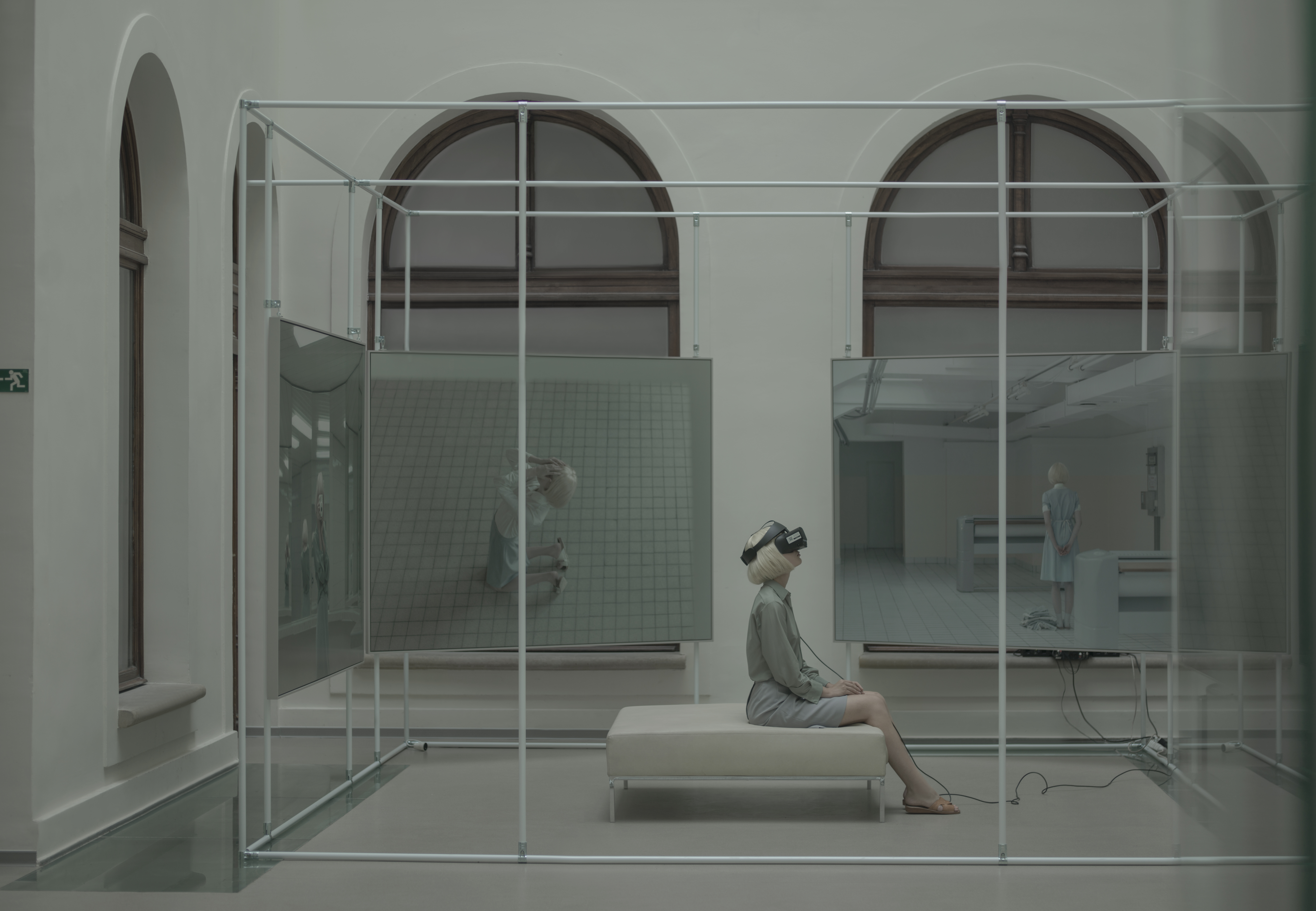

A: What does your work teach you?
E: It teaches me belief in the process. Creating the final work is only the last step on a long way of researching, trying, failing, and changing, it is formed along the way. Often only observed in retrospect, I can now see all my stages, struggles, and findings in the work of the time. Not giving up does not mean being stuck on the idea. It means moving, switching perspectives, searching another angle, observing it, and staying curious but equally patient.
It also teaches me to cope, to transform thought or feeling into the matter, alchemical healing of a sort:) I re-enter topics often because there is a felt need for that, something to be resolved, completed, or simply lived again. Artificial Tears comes from Notes on Hysteria, passes through Work In Progress (created in collaboration with @Enes Güç ), and continues in Æther – the character evolved with me – its body and mind, standpoint.
The insight expands mostly through exchange with people sharing their world and experience. Whether it is a project concerning artists with special needs, discourse on homelessness, or studying the role of architecture and politics in forming the social body, I enjoy the position of a student through projects. The first bigger artistic endeavor Asymptote created together with @Adam Csoka Keller dealt with our cultural identity and the effects of the previous regime (being a Soviet satellite state for more than 40 years) on Slovak society till this day. Initiated by the interest in the remaining architecture of the period, the findings led us to an extensive interview process that took months prior to actual creative work. It was important to understand the topic from different standpoints, before touching it. Even though the final interpretation ended up as symbolic and surreal imagery, all collected stories and thoughts are present as references in signs, or felt almost like an air of the photographs.
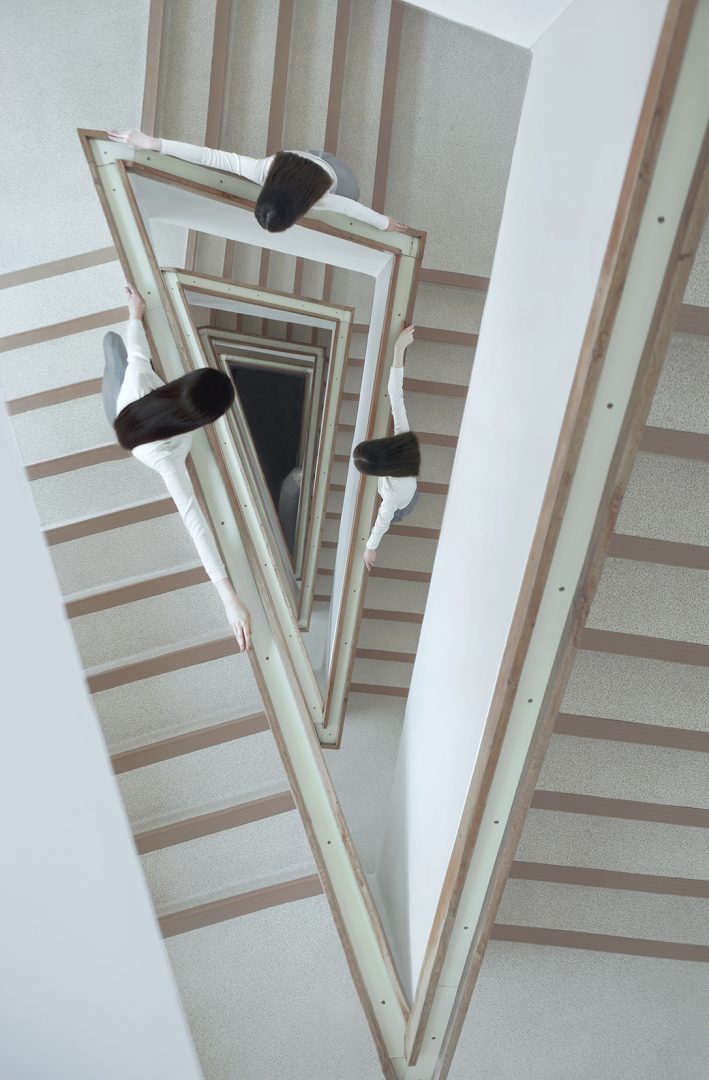

A: Tell me about light and darkness
E: There are many ways of looking. The play of light and darkness is how every image is created.
I don’t relate to the description of ‘dark’ as negative or evil, in the usual good/bad dichotomy. For me light is insight and illumination - becoming visible, seen. Darkness is the mysterious, deep unknown, which awakens curiosity. And I am attracted to explore both, to uncover what is under the first plane, light and dark.
I noticed that my work is often labeled as dark only. I suppose that is because I often show the issue rather than the solution - like the vision of approaching dystopia in the multi-sensory VR experience Anti-Atlantis aiming for attention towards our environment and necessary action, whilst possible. Reversing a probable, frightening future in the present moment is what the piece aims for, it is a call for urgency rather than some pessimistic prediction. The work often should disturb- as to disturb is to set in motion- towards contemplation, a potent shift, the way and thus so often also change.
The ongoing project SimulacRaum conceptually precedes Anti-Atlantis, showing the current state of shaping our environment, human exploitation, and simultaneous reconstruction, mimicking of nature. Whether resulted images appear as aesthetical observations or critical commentary is in the eyes or mind of the beholder. Conversely, it is both.
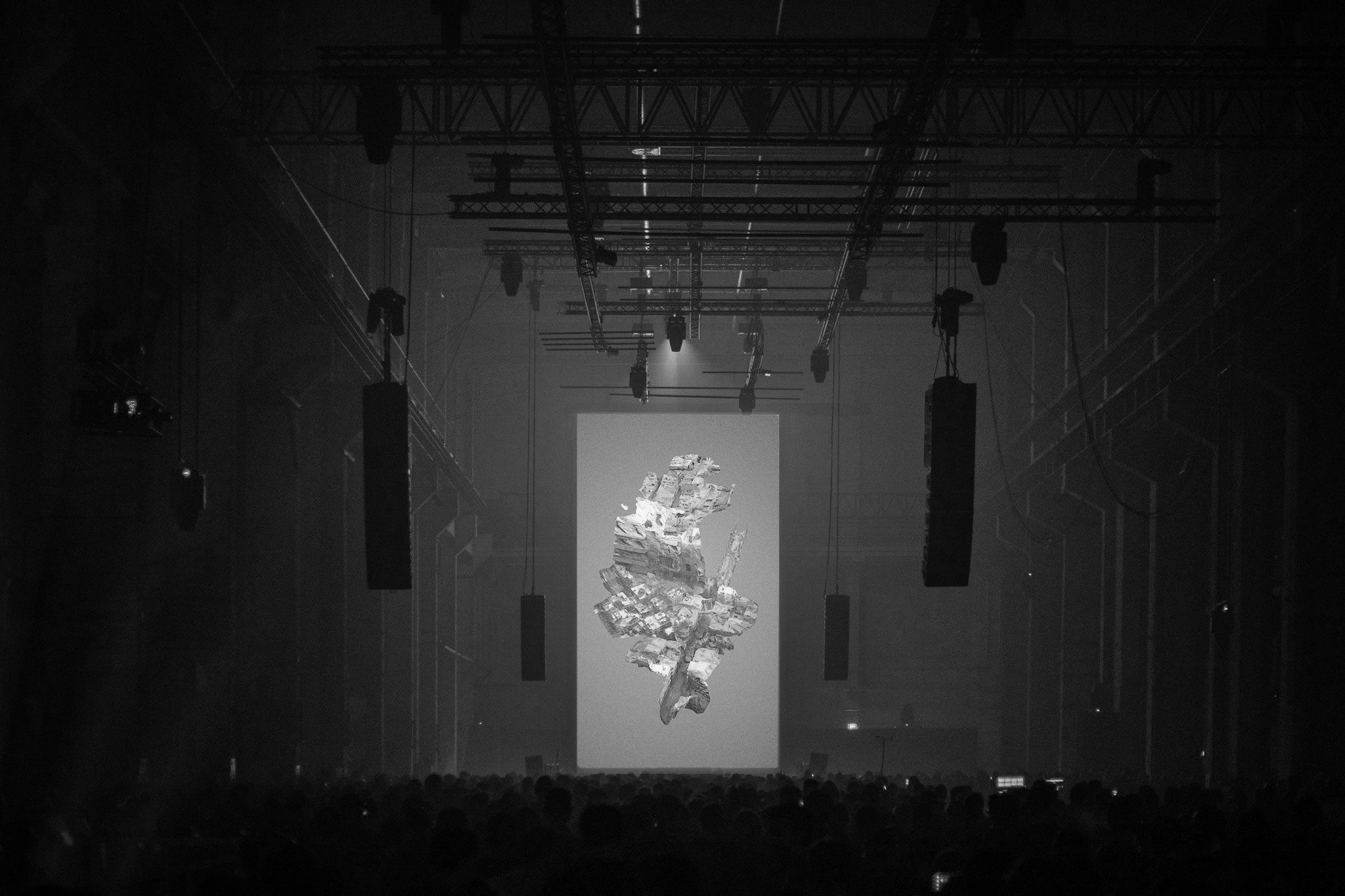

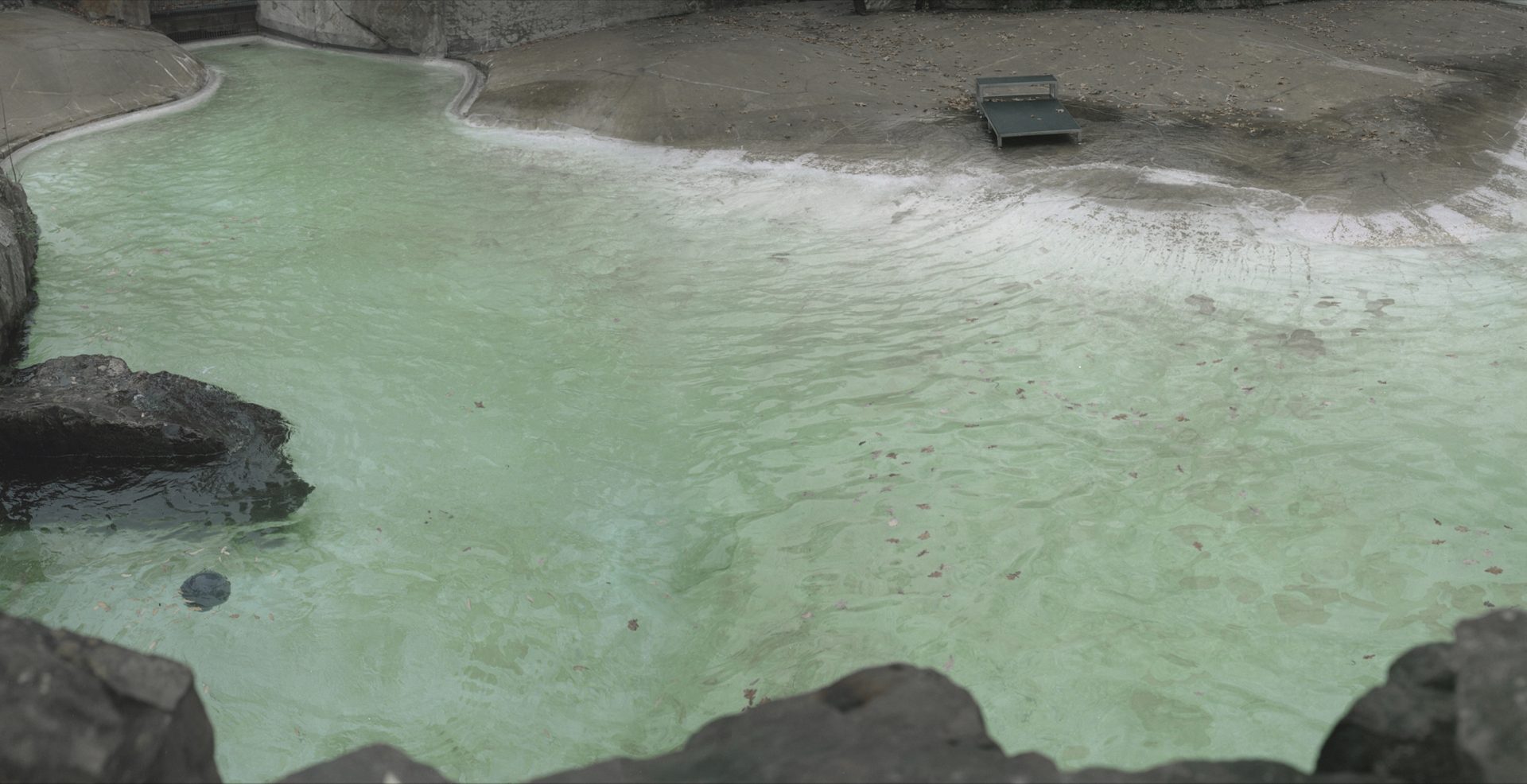
A: Would you share with us three pieces of art (e.g. from the fields of music, literature, visual arts, and architecture) that are meaningful to you?
E: There are so many that it is hard to choose, but if I need to:
I currently finished the book Caliban and the Witch: Women, the Body and Primitive Accumulation by Silvia Federici which I highly recommend.
The film Possession by Andrzej Żuławski is one I saw at least 10 times and each moment it awakened in me different reflections and emotions, an opportunity to read between the lines.
With architecture, I will be less specific. Due to my current project, I visit botanical gardens, which are basically in every larger city. I love the feeling of suddenly entering a different world full of shapes, smells, and sounds (even if those as often simulated). It is a strange and very pleasant illusion, that usually calms me. One of the most beautiful had been Estufa Fria de Lisboa.
A: When was the last time you were kissed by a Muse?
E: When answering your questions:)

Website: www.evelynbencicova.com
Instagram: @evelyn_bencicova
© 2023 Evelyn Bencicova
More KUBAPARIS

